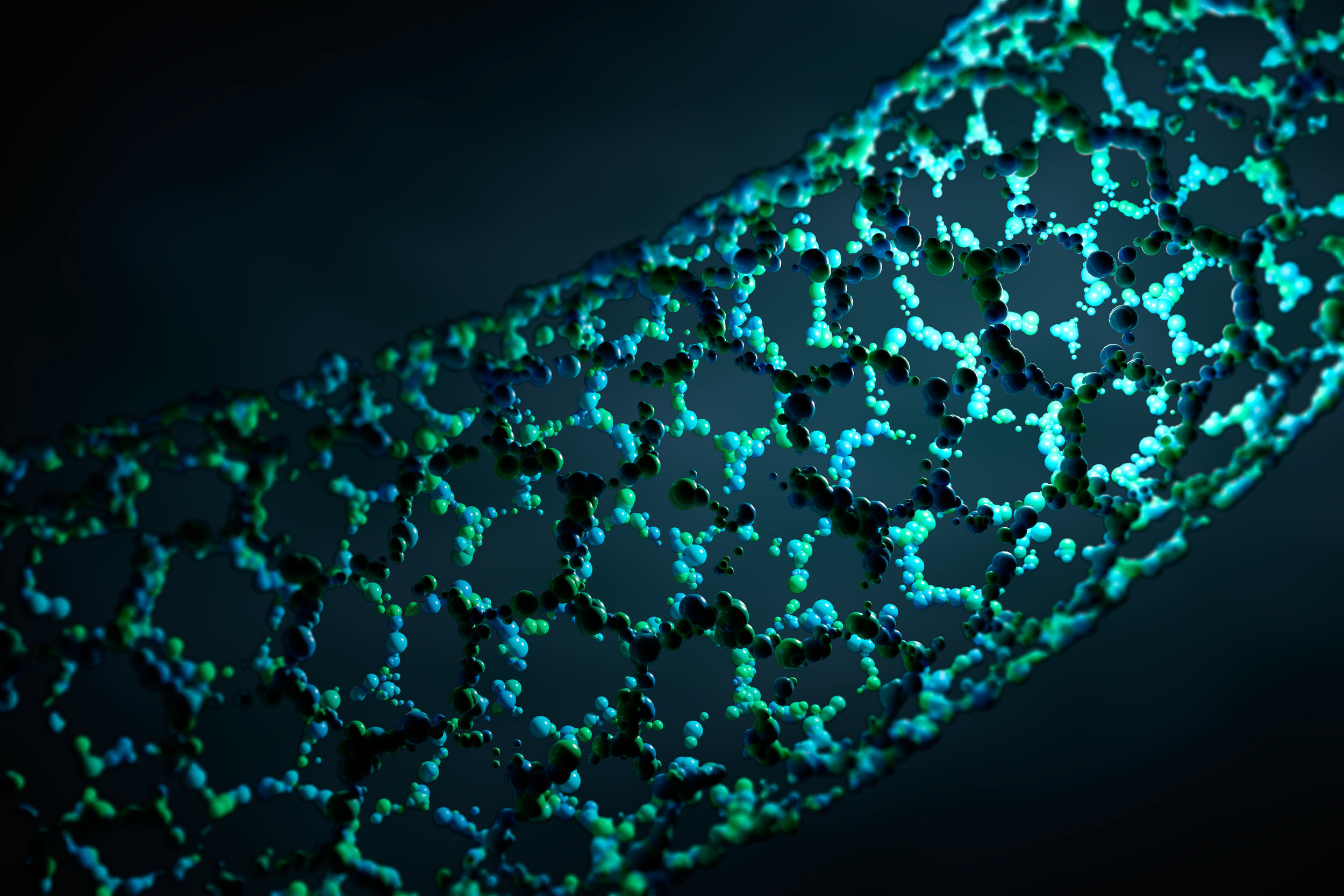Harvesting sunlight using nanotubes

Rolling an atom-thick semiconductor layer into a nanoscale tube allows it to convert solar energy into electricity without the need for semiconductor junctions — prerequisite features of conventional solar cells.
For decades, the development of a cheap and efficient way to convert sunlight into electricity has been at the forefront of research, from the physical sciences to engineering. Usually, devices for harvesting solar energy, called solar cells, are made of semiconductors such as silicon. In these devices, electrical power is generated at the junction between two types of semiconductor material. However, the efficiency of junction-based solar cells has almost reached its theoretical limit, and it is therefore imperative to explore methods for converting sunlight into electricity that do not require semiconductor junctions. Writing in Nature, Zhang et al. report a key advance in this direction. They demonstrate a junction-free solar cell that is produced by curling an atom-thick semiconductor layer into a nanoscale tube.
In a conventional solar cell, different chemical elements are added to two regions of a semiconductor in a process known as doping. Electrical transport occurs through negatively charged electrons in one region and through positively charged electron vacancies, called holes, in the other. An electric field is generated at the junction between these two regions. When sunlight is absorbed at this junction, electron–hole pairs are produced. The electrons and holes are then separated by the electric field, giving rise to an electric current. This conversion of solar energy into electricity is known as the photovoltaic effect.
Zhang and colleagues fabricated junction-free solar cells using the semiconductor tungsten disulfide. Crystals of this material have a layered structure, and can be peeled off layer by layer in a similar way to graphite. The resulting atom-thick sheets can then be rolled by chemical methods into tubes that have diameters of about 100 nanometres. The authors made devices from three types of tungsten disulfide: a monolayer, a bilayer and a nanotube.
The authors found that, whereas the monolayer and bilayer devices generated a negligible electric current under illumination, the nanotube device exhibited a large photovoltaic effect. Given that these three types of solar cell have the same, uniform chemical identity, how does the nanotube device convert light into electricity without the assistance of a junction? And why is this ability absent in the monolayer and bilayer devices? Zhang et al. point to a phenomenon called the bulk photovoltaic effect (BPVE), and attribute the diverse performance of the solar cells to their distinctive crystal symmetries. The BPVE can spontaneously generate a current in a uniform semiconductor, without the requirement for a junction.
The BPVE was first observed2 at Bell Labs in New Jersey in 1956, just two years after the invention of modern silicon solar cells3. The effect is restricted to non-centrosymmetric materials4, which are characterized by a lack of symmetry under spatial inversion (the combination of a 180° rotation and a reflection). The BPVE has two intriguing features: the light-generated current depends on the polarization of the incident light, and the associated voltage is larger than the material’s bandgap (the energy required to excite conducting free electrons). However, the effect has a typically low conversion efficiency, and so has remained of academic rather than practical interest over the years.
To achieve a high BPVE efficiency, a material must have high light absorption and low internal symmetry. However, these two properties do not usually coexist in a given material. Semiconductors that absorb most incident sunlight generally have high symmetry, which diminishes or even prevents the BPVE. And common materials that have low symmetry, such as compounds called perovskite oxides, absorb little sunlight owing to their large bandgap. To circumvent this problem, tremendous effort has been devoted to enhancing light absorption in materials that have low symmetry, for example by using doping5. Meanwhile, it has been shown that the BPVE can be enabled in semiconductors when it is otherwise prohibited, by using mechanical fields to tailor the material’s crystal symmetry6.
Zhang and colleagues’ work calls attention to a hitherto-unexplored approach: shaping the semiconductors that have high light absorption into nanotubes. In the case of tungsten disulfide, the crystal symmetry of the nanotube is reduced with respect to that of the monolayer and bilayer, because of the tube’s curved walls. The combination of excellent light absorption and low crystal symmetry means that the nanotube exhibits a substantial BPVE. The density of the electric current associated with the BPVE surpasses that of the materials that have inherently low symmetry, even though the conversion efficiency of the BPVE is still much lower than that of the junction-based photovoltaic effect in conventional solar cells.
The authors’ results demonstrate the great potential of nanotubes in harvesting solar energy, and raise several technological challenges and scientific questions. From an applications perspective, it would be instructive to fabricate and characterize a solar cell that is made up of an array of semiconductor nanotubes, to check the feasibility of scaling up the approach. The direction of the current generated by the BPVE in each nanotube would be largely determined by the material’s internal symmetry. Therefore, a uniform symmetry across the nanotube array would be needed to gather a collective current from the solar cell. In a worst-case scenario, if the currents generated in different nanotubes were in opposite directions, they would cancel each other out.
An important but unanswered question is whether the BPVE and the junction-based photovoltaic effect could cooperate in the same solar cell, to boost the overall efficiency. These two effects could harness solar energy in a successive manner. Nevertheless, despite the remaining challenges, Zhang and colleagues’ work provides a possible route towards the design of highly efficient, unconventional solar cells.





